- Clone
- L276F12 (See other available formats)
- Regulatory Status
- RUO
- Other Names
- Fusin, LESTR, Sdf1r, Cmkar4, PB-CKR, PBSF/SDF-1
- Isotype
- Rat IgG2b, κ

-

C57BL/6 mouse thymocytes were stained with CD4 FITC and CD184 (clone L276F12) Brilliant Violet 421™ (top) or rat IgG2b, κ Brilliant Violet 421™ isotype control (bottom). -

| Cat # | Size | Price | Quantity Check Availability | ||
|---|---|---|---|---|---|
| 146511 | 50 µg | $270.00 | |||
CD184, also known as CXCR4, is a member of the G protein coupled receptor family that binds CXCL12 (SDF1). CXCR4 and CXCL12 play an important role in immune and inflammatory responses through the regulation of cell migration and growth. CXCR4 plays a crucial role in the pathogenesis of several autoimmune diseases such as atherosclerosis, rheumatoid arthritis, and wound healing. In addition, CXCR4 is the cofactor for fusion and entry of the T cell-tropic form of HIV-1.
Product Details
- Verified Reactivity
- Mouse
- Antibody Type
- Monoclonal
- Host Species
- Rat
- Immunogen
- Mouse CXCR4-transfected cells
- Formulation
- Phosphate-buffered solution, pH 7.2, containing 0.09% sodium azide and BSA (origin USA).
- Preparation
- The antibody was purified by affinity chromatography and conjugated with Brilliant Violet 421™ under optimal conditions.
- Concentration
- 0.2 mg/ml
- Storage & Handling
- The antibody solution should be stored undiluted between 2°C and 8°C, and protected from prolonged exposure to light. Do not freeze.
- Application
-
FC - Quality tested
- Recommended Usage
-
Each lot of this antibody is quality control tested by immunofluorescent staining with flow cytometric analysis. For flow cytometric staining, the suggested use of this reagent is ≤0.25 µg per million cells in 100 µl volume. It is recommended that the reagent be titrated for optimal performance for each application.
Brilliant Violet 421™ excites at 405 nm and emits at 421 nm. The standard bandpass filter 450/50 nm is recommended for detection. Brilliant Violet 421™ is a trademark of Sirigen Group Ltd.
Learn more about Brilliant Violet™.
This product is subject to proprietary rights of Sirigen Inc. and is made and sold under license from Sirigen Inc. The purchase of this product conveys to the buyer a non-transferable right to use the purchased product for research purposes only. This product may not be resold or incorporated in any manner into another product for resale. Any use for therapeutics or diagnostics is strictly prohibited. This product is covered by U.S. Patent(s), pending patent applications and foreign equivalents. - Excitation Laser
-
Violet Laser (405 nm)
- Application Notes
-
Additional reported applications (for the relevant formats) include: in vivo blocking1
-
Application References
(PubMed link indicates BioLegend citation) -
- Costa MJ, et al. 2018. PLoS One. 13:e0194688 (Block) PubMed
- Product Citations
-
- RRID
-
AB_2562788 (BioLegend Cat. No. 146511)
Antigen Details
- Structure
- G-protein-coupled seven transmembrane receptor, 39.7 kD
- Distribution
-
T lymphocytes, monocytes, macrophages, tissue-committed stem/progenitor cells (TCSCs), mast cells, vascular smooth muscle cells (VSMCs)
- Function
- Development of cardiovascular and central nervous system, hematopoiesis, and colonization of BM by fetal liver-derived hematopoietic stem cells (HSCs) during embryogenesis, homing and egress of CD34+ CXCR4+ progenitor cells from bone marrow, and their migration into peripheral tissues. Critical role in homing of cancer cells to specific metastatic sites. Possible role in the ubiquitin proteosome system.
- Interaction
- Robo -1
- Ligand/Receptor
- CXCL12 (SDF-1)
- Cell Type
- Macrophages, Mast cells, Mesenchymal Stem Cells, Monocytes, Neural Stem Cells, T cells
- Biology Area
- Angiogenesis, Cell Biology, Cell Motility/Cytoskeleton/Structure, Immunology, Neuroscience, Neuroscience Cell Markers, Signal Transduction, Stem Cells, Ubiquitin/Protein Degradation
- Molecular Family
- CD Molecules, Cytokine/Chemokine Receptors, GPCR
- Antigen References
-
1. Kucia M, et al. 2005. Stem Cells 23:879.
2. Muller A, et al. 2001. Nature 410:50.
3. Saini V, et al. 2010. J. Biol. Chem. 285:15566.
4. Prasad A, et al. 2007. J. Leuko. Biol. 82:465.
5. De Klerck B, et al. 2005. Arthritis Res. Ther. 7:R1208.
6. Rueda P, et al. 2008. PLoS One 3:e2543.
7. Feng Y, et al. 1996. Science 272:872. - Gene ID
- 12767 View all products for this Gene ID
- UniProt
- View information about CD184 on UniProt.org
Other Formats
View All CD184 Reagents Request Custom Conjugation| Description | Clone | Applications |
|---|---|---|
| Purified anti-mouse CD184 (CXCR4) | L276F12 | FC |
| Alexa Fluor® 647 anti-mouse CD184 (CXCR4) | L276F12 | FC |
| PE anti-mouse CD184 (CXCR4) | L276F12 | FC |
| APC anti-mouse CD184 (CXCR4) | L276F12 | FC |
| PerCP/Cyanine5.5 anti-mouse CD184 (CXCR4) | L276F12 | FC |
| Brilliant Violet 421™ anti-mouse CD184 (CXCR4) | L276F12 | FC |
| PE/Dazzle™ 594 anti-mouse CD184 (CXCR4) | L276F12 | FC |
| Biotin anti-mouse CD184 (CXCR4) | L276F12 | FC |
| Brilliant Violet 711™ anti-mouse CD184 (CXCR4) | L276F12 | FC |
| Brilliant Violet 605™ anti-mouse CD184 (CXCR4) | L276F12 | FC |
| TotalSeq™-A0444 anti-mouse CD184 (CXCR4) | L276F12 | PG |
| TotalSeq™-B0444 anti-mouse CD184 (CXCR4) | L276F12 | PG |
| APC/Cyanine7 anti-mouse CD184 (CXCR4) Antibody | L276F12 | FC |
| TotalSeq™-C0444 anti-mouse CD184 (CXCR4) | L276F12 | PG |
| KIRAVIA Blue 520™ anti-mouse CD184 (CXCR4) | L276F12 | FC |
| Brilliant Violet 785™ anti-mouse CD184 (CXCR4) | L276F12 | FC |
| Spark Red™ 718 anti-mouse CD184 (CXCR4) Antibody | L276F12 | FC |
Compare Data Across All Formats
This data display is provided for general comparisons between formats.
Your actual data may vary due to variations in samples, target cells, instruments and their settings, staining conditions, and other factors.
If you need assistance with selecting the best format contact our expert technical support team.
-
Purified anti-mouse CD184 (CXCR4)

C57BL/6 mouse thymocytes were stained with purified CXCR4 (c... 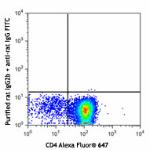
-
Alexa Fluor® 647 anti-mouse CD184 (CXCR4)
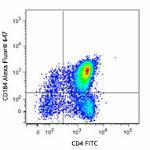
C57BL/6 mouse thymocytes were stained with CD4 FITC and CD18... 
-
PE anti-mouse CD184 (CXCR4)
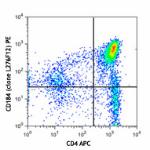
C57BL/6 mouse thymocytes were stained with CD4 APC and CD184... 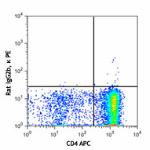
-
APC anti-mouse CD184 (CXCR4)
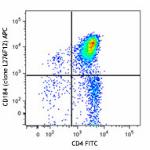
C57BL/6 mouse thymocytes were stained with CD4 FITC and CD18... 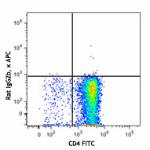
-
PerCP/Cyanine5.5 anti-mouse CD184 (CXCR4)

C57BL/6 mouse thymocytes were stained with CD4 APC and CD184... -
Brilliant Violet 421™ anti-mouse CD184 (CXCR4)
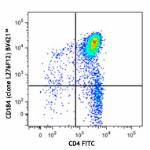
C57BL/6 mouse thymocytes were stained with CD4 FITC and CD18... 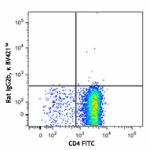
-
PE/Dazzle™ 594 anti-mouse CD184 (CXCR4)

C57BL/6 mouse thymocytes were stained with CD4 FITC and CD18... -
Biotin anti-mouse CD184 (CXCR4)
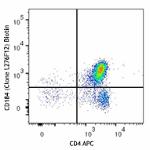
C57BL/6 mouse thymocytes were stained with biotinylated CXCR... 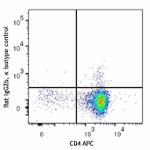
-
Brilliant Violet 711™ anti-mouse CD184 (CXCR4)
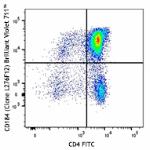
Mouse thymocytes stained with CD4 FITC and CD184 (clone L276... 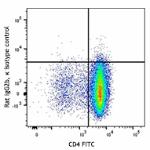
-
Brilliant Violet 605™ anti-mouse CD184 (CXCR4)
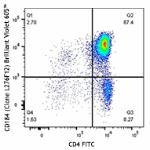
Mouse thymocytes stained with CD4 FITC and CD184 (clone L276... 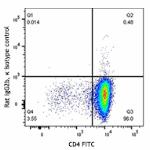
-
TotalSeq™-A0444 anti-mouse CD184 (CXCR4)
-
TotalSeq™-B0444 anti-mouse CD184 (CXCR4)
-
APC/Cyanine7 anti-mouse CD184 (CXCR4) Antibody

C57BL/6 mouse thymocytes were stained with CD4 FITC and CD18... -
TotalSeq™-C0444 anti-mouse CD184 (CXCR4)
-
KIRAVIA Blue 520™ anti-mouse CD184 (CXCR4)

C57BL/6 mouse thymocytes were stained with anti-mouse CD4 (c... -
Brilliant Violet 785™ anti-mouse CD184 (CXCR4)

C57BL/6 mouse thymocytes were stained with anti-mouse CD4 (c... -
Spark Red™ 718 anti-mouse CD184 (CXCR4) Antibody

C57BL/6 mouse thymocytes were stained with anti-mouse CD4 (c...
